Kale: Grow & Care for Kale Brassica oleracea
Written by Iris
Oct 27 2021

Kale has long been a health food favorite because, even as a Brassica oleracea plant, it's packed with antioxidants, iron and phytonutrients. Kale Loose leaves grow outward from the central stem, making kale ideal for home gardeners to harvest again and again. And since Kale is already on the "dirty Dozen" list of pesticid-laden vegetables, it may be worth it to grow your own.
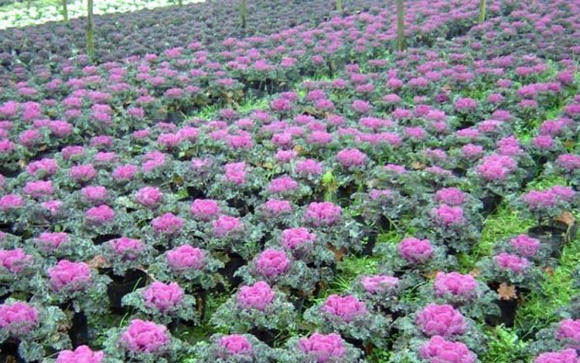
Sprinkle seeds about an inch apart over organically rich soil. Do not cover them. Germination takes 7 to 10 days.
Once seedlings have one set of true leaves, thin them to a distance of 18 to 24 inches apart.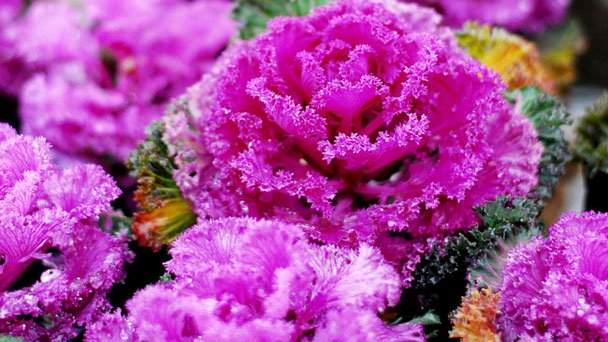
For cuttings, find an extremely healthy side stem with multiple leaves, and cut it at the main stem of the plant. Trim off lower side leaves, leaving only the top leaf.
Once your side leaves are removed, examine what's left. If it's a large leaf, cut off the top half of the leaf, leaving only the bottom half attached to the stem. This reduces the size of the leaf that the stressed plant will need to care for.
Cut the base of the stem at a 45-degree angle just below one of the leaf nodes, and place into a pot of prepared, well-draining and damp potting soil. Mist the soil regularly to keep it moist, but not wet. It should develop roots within 3 weeks.
If you want to, you can dip the stem into rooting hormone before planting it, but this is purely an optional step. Some reports indicate that rooting is quicker and the plant healthier as a result.
You should be able to transplant your rooted cutting into the garden in about three months after hardening it off to the outside weather.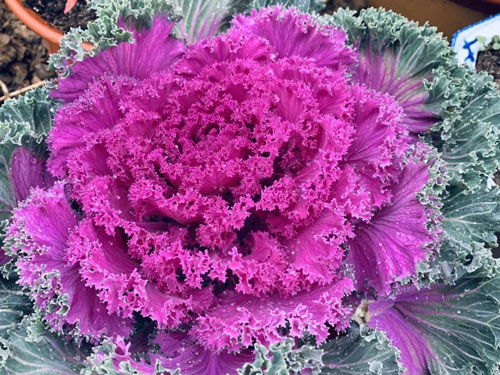
Harlequin bug, or Calico bug, is a shield-shaped stink bug that damages plants by sucking the sap out of stems. If brassica plants are not pulled immediately after harvest, these red and black bugs will have a field day with your kale, collards, and broccoli. They are easy to spot but quickly drop off the plant when they sense a threat. Keep weeds away from the base of your kale, so they don't have a hiding place. Knock them off the plant into a bucket of water with a bit of dish soap. The eggs of this bug look like little sushi rolls on the underside of the leaf and should be removed immediately. The University of Maryland Extension suggests floating row covers to exclude them, insecticidal soap, or using cleome as a trap crop.
Aphids are another sap-sucking pest that is partial to the kale leaves, especially the crinkly ones. If it's feasible, blast them off with a forceful spray of water daily for several days in a row. Insecticidal soap is another option. A study found that intercropping herbs such as coriander, green onion, and parsley attracted plenty of aphid predators, such as spiders, causing aphids to disperse and therefore reducing the damage to plants.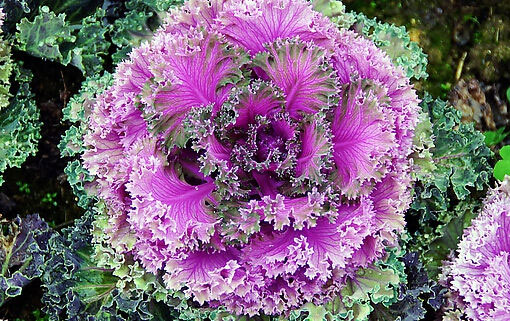
Here’s a quick run of some kale varieties you should consider.
Redbor. It has curly leaves, crisp texture, and mild flavor.
Lacinato. It boasts of very thick and hardy leaves that can even be harvested shortly after a snowfall.
Hanover Salad. Its pleasant taste makes it great for eating raw in salads. It grows fast and matures early.
Red Russian. Have smooth leaves with purple edges and veins. It has excellent resistance to slug and related pests in the garden.
Vates: This is a dwarf variety of Kale that that's bluish-green. It can withstand both cold and heat weather conditions.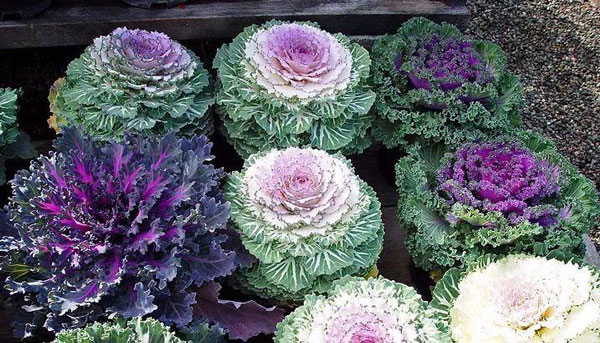
Where to Grow KaleWhen to Grow KaleHow to Grow KaleKale Propagation with SeedsKale Propagation with CuttingsHow to Care for Kale Kale Lighting RequirementsKale Soil CareKale WateringKale Temperature & HumidityKale FertilizerKale Pests & Diseases CareVarieties of KaleKale Care FAQCan I Plant Tomatoes And Kale Together?Can Kale Grow In Pots?Can You Eat Kale After It Flowers?
Where to Grow Kale
Kale thrives in rich, well-drained organic soil. Such soil has high nitrogen content that's very important for the development of health leaves. They prefer a soil pH range of 5.5-6.8. In warm weather, plant them under some shade. For the best flavor, you should grow Kale in cold weather. If you wish to plant Kale in early spring, start them indoors in late winter.When to Grow Kale
Kale is a cool-weather crop that can tolerate temperatures as low as 20°F (-6.7°C). Kale does not tolerate heat. Direct seed or transplant kale so that it comes to harvest before daytime temperatures exceed 80°F (26°C). In cool-summer regions, plant kale in early spring for summer to early fall harvest. In warm- and hot-summer regions, plant kale in late summer for harvest in late fall or winter. In mild-winter regions, kale can be sown in fall for winter harvest.
How to Grow Kale
Kale Propagation with Seeds
Sow seed directly into the garden or into a 12 inch wide by 12 inch deep container about three months before the last average frost date in the fall. If you're planting as part of a mixed grouping in a large pot, allow this amount of space per kale plant, to allow it to spread.Sprinkle seeds about an inch apart over organically rich soil. Do not cover them. Germination takes 7 to 10 days.
Once seedlings have one set of true leaves, thin them to a distance of 18 to 24 inches apart.

Kale Propagation with Cuttings
Kale is most often propagated by seed, as mentioned above. You can also start growing kale from cuttings.For cuttings, find an extremely healthy side stem with multiple leaves, and cut it at the main stem of the plant. Trim off lower side leaves, leaving only the top leaf.
Once your side leaves are removed, examine what's left. If it's a large leaf, cut off the top half of the leaf, leaving only the bottom half attached to the stem. This reduces the size of the leaf that the stressed plant will need to care for.
Cut the base of the stem at a 45-degree angle just below one of the leaf nodes, and place into a pot of prepared, well-draining and damp potting soil. Mist the soil regularly to keep it moist, but not wet. It should develop roots within 3 weeks.
If you want to, you can dip the stem into rooting hormone before planting it, but this is purely an optional step. Some reports indicate that rooting is quicker and the plant healthier as a result.
You should be able to transplant your rooted cutting into the garden in about three months after hardening it off to the outside weather.

How to Care for Kale
Kale Lighting Requirements
When planting during the cool season, pick a spot that will receive abundant sunlight. 8-10 hours of sun is recommended per day.Kale Soil Care
Space the seeds ¼ to ½ inch deep. Avoid using potting soil and sow the seeds in well-drained, loamy soil with pH levels between 5.6 and 6.8. It will help in avoiding clubroot, a common fungal disease in the cabbage family.Kale Watering
Cool-weather growing requires less water than summer tomatoes, as expected. Still, it's important to actively avoid water and heat stress in your kale plant, which will help to maintain good flavor without unpleasant bitterness. About an inch of rainfall, or the equivalent amount of water, per week is ideal. Sandy soil that doesn’t retain water requires more than one watering per week. Use a moisture meter to make sure water is reaching down to the kale's taproot.Kale Temperature & Humidity
Though some kale is cold-proof down to freezing, kale's leaf mass, beta carotene, and lutein all increase as air temperature rises to 68 degrees F, and decrease as the air temperature increases further, according to a study. While kale tolerates a fairly wide range of temperatures, timing outdoor planting or regulating greenhouse temperatures will improve nutritional value.Kale Fertilizer
When planting, mix fertilizer into the top 3 to 4 inches of soil. Then, feed your kale throughout the growing season, following the instructions on your fertilizer label. Use compost or a high-nitrogen vegetable fertilizer.Kale Pests & Diseases Care
There are a few critters to watch out for when growing kale. Cabbage worms, for one, are the green “inch-worm” larva of those cute white moths that flutter around and appear harmless. Don't be fooled — they will devour whole leaves before you know it. After planting kale, check daily for eggs and worms.Harlequin bug, or Calico bug, is a shield-shaped stink bug that damages plants by sucking the sap out of stems. If brassica plants are not pulled immediately after harvest, these red and black bugs will have a field day with your kale, collards, and broccoli. They are easy to spot but quickly drop off the plant when they sense a threat. Keep weeds away from the base of your kale, so they don't have a hiding place. Knock them off the plant into a bucket of water with a bit of dish soap. The eggs of this bug look like little sushi rolls on the underside of the leaf and should be removed immediately. The University of Maryland Extension suggests floating row covers to exclude them, insecticidal soap, or using cleome as a trap crop.
Aphids are another sap-sucking pest that is partial to the kale leaves, especially the crinkly ones. If it's feasible, blast them off with a forceful spray of water daily for several days in a row. Insecticidal soap is another option. A study found that intercropping herbs such as coriander, green onion, and parsley attracted plenty of aphid predators, such as spiders, causing aphids to disperse and therefore reducing the damage to plants.

Varieties of Kale
There exist many types of Kale that are worth a try. Whereas the flat-leaf varieties of Kale establish faster, the curly-leaf varieties do better in cold weather.Here’s a quick run of some kale varieties you should consider.
Redbor. It has curly leaves, crisp texture, and mild flavor.
Lacinato. It boasts of very thick and hardy leaves that can even be harvested shortly after a snowfall.
Hanover Salad. Its pleasant taste makes it great for eating raw in salads. It grows fast and matures early.
Red Russian. Have smooth leaves with purple edges and veins. It has excellent resistance to slug and related pests in the garden.
Vates: This is a dwarf variety of Kale that that's bluish-green. It can withstand both cold and heat weather conditions.

Kale Care FAQ
Can I Plant Tomatoes And Kale Together?
Kale and other members of the brassica family should not be planted near tomatoes because they can stunt the growth of the tomatoes. Brassica plants include arugula, bok choy, broccoli, broccoli raab, Brussels sprouts, cabbage, cauliflower, honesty, horseradish, kohlrabi, radishes, rutabaga, sweet alyssum, turnips, and watercress.Can Kale Grow In Pots?
Yes, kale can be grown in containers. Each plant needs a container at least 12 inches wide by 12 inches deep filled with good quality potting soil. Find a sunny place for your kale plants where they will get at least six hours of sun each day. Give potted kale plants one to one and a half inches of water per week, keeping the soil moist to a depth of one inch. Kale growing in containers should be fertilized every seven to 10 days with a water-soluble 8-4-4 fertilizer mixed into water.Can You Eat Kale After It Flowers?
The flowering stalks of the kale plant are edible and are especially sweet. You may see them available for sale at farmer's markets as kale raab. Similarly, broccoli raab is the flowering stalk of the broccoli plant.Latest Updated
- Benefits of Bugleweed - 7 Science-backed Health Benefits
- Bugleweed Dangers & Side Effects - Is It Poisonous?
- How to Plant Evergreen Trees - What You Should Know
- When to Plant Evergreens - Grow Guide for Evergreen Trees
- 12 Wonderful Evergreen Shrubs for Your Garden
- 12 Popular Evergreen Plants with Pictures for Beginners
- When And How To Prune A Lilac Bush Like a Pro
- How to Grow & Care for Lilac Vine (Hardenbergia Violacea)
- Japanese Lilac Tree (Syringa Reticulata) Care & Propagation Guide
- Shumard Oak Pros and Cons - What to Know
Popular Articles
- Winter maintenance of Antirrhinum Majus
- How to Grow Terminalia Mantaly Tree
- How to Grow and Care for Crossostephium Chinense
- How to grow Antirrhinum Majus in spring
- Peristeria Elata (Dove Orchid) Profile: Info & Care Guide
- Underwatered Snake Plant (Sansevieria Trifasciata) - Signs And How To Fix
- How to Care for Brazilian Jasmine Plant (Mandevilla Sanderi)
- How to Grow & Care for Graptopetalum Purple Delight in Summer
- Rosa Chinensis (China Rose): Plant Growing & Care Tips
- How to Care for Baby Sun Rose (Aptenia Cordifolia)